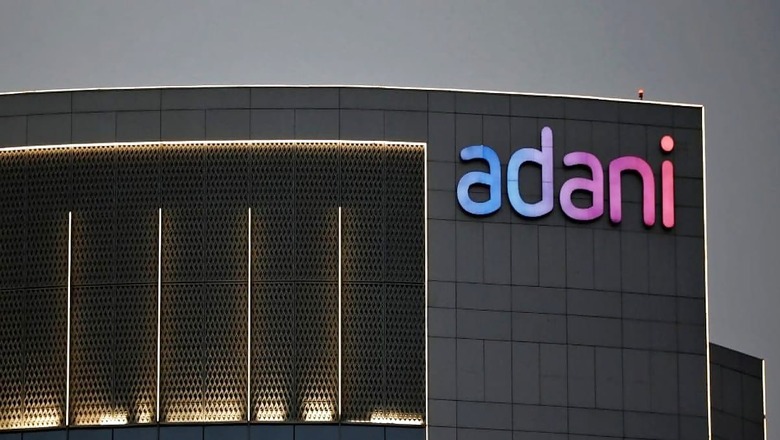
views
Billionaire Gautam Adani’s ports-to-energy conglomerate saw June quarter pre-tax profit surge by 33 per cent on back of strong performance by core infrastructure business as also emerging businesses ranging from solar and wind manufacturing to airports.
“EBITDA (in April-June) surged by 32.87 per cent year-on-year to reach Rs 22,570 crore, resulting in a trailing twelve-month (TTM) EBITDA of Rs 79,180 crore, marking a 45.13 per cent increase over the corresponding TTM of the previous year,” the group said in a statement.
Group net profit jumped over 50 per cent to Rs 10,279 crore in April-June – the first quarter of the current 2024-25 fiscal year.
“The consistently advancing EBITDA is largely driven by the Group’s highly stable and resilient ‘core infrastructure’ platform, which constitutes over 80 per cent of the portfolio EBITDA and saw a remarkable 41.6 per cent growth year-on-year in Q1,” it said.
The core infrastructure platform comprises flagship Adani Enterprises Ltd’s infrastructure businesses, utility (Adani Green Energy, Adani Power, Adani Energy Solutions, and Adani Total Gas) and transport (Adani Ports & SEZ) businesses.
Adani Enterprises – the business incubator of the group – saw EBITDA rise 46 per cent to Rs 4,487 crore and net profit more than double to Rs 1,776 crore in April-June.
Renewable energy firm Adani Green Energy posted a 30 per cent rise in EBITDA to Rs 2,866 crore and a near doubling of net profit to Rs 629 crore as operational capacity expanded by almost a third. Adani Power profit surged 54 per cent to Rs 3,490 crore driven by sales while the same for Adani Ports & SEZ was up 47 per cent to Rs 3,107 crore.
Smallest profit growth was in city gas distribution firm Adani Total Gas Ltd which posted a 14.4 per cent rise to Rs 172 crore.
Emerging infra businesses (Adani New Industries Ltd, airports, and roads) housed under flagship incubator Adani Enterprises Ltd (AEL) led the overall growth with the segment EBITDA rising 70 per cent to Rs 2,991 crore.
Adani said leverage (net debt to EBITDA) at 2.2x was a multi-year low.
“The strong performance for the quarter was led by Adani Enterprises’ emerging businesses, including solar and wind manufacturing – India’s largest and part of a fully integrated green hydrogen chain – as well as its airports and roads sectors. These fast-growing businesses now contribute 13.3 per cent to the portfolio-level EBITDA, up from 7.2 per cent a year ago,” it said. “This expansive yet resilient growth is attributed to Adani’s strategic focus on its infrastructure platform, which provides high stability and predictability.” The solar module manufacturing business – India’s first and largest vertically integrated solar PV manufacturer – saw module sales rise 125 per cent year-on-year in the quarter. The airport business continues to see strong growth from rising passenger movement, increasing consumer offerings, and the addition of routes, airlines, and flights across seven operational airports.
The annual passenger movement across 7 airports operated by Adani crossed 90 million for the first time.
During the quarter, eight new routes, six new airlines, and 13 new flights were added across all seven airports.
The group’s road business saw the construction of highest ever 730 lane-km during the quarter. Adani Green Energy started construction work for 500 MW hydro pump storage while its total electricity generation capacity at its mega renewable park at Khavda in Gujarat rose to 11.2 gigawatts (GW).
In the cement business, promoters infused Rs 15,000 crore in two tranches in Ambuja Cements in March and April, thus fully subscribing to the warrant program and infusing a total of Rs 20,000 crore since the acquisition in September 2022. It also acquired Penna Cement, increasing the total capacity to 89 million tonnes per annum.
Headquartered in Ahmedabad, Adani Group is India’s largest and fastest-growing portfolio of diversified businesses with interests across energy and utilities, transport and logistics (including seaports, airports, shipping, and rail), natural resources, and the consumer sector.
















Comments
0 comment